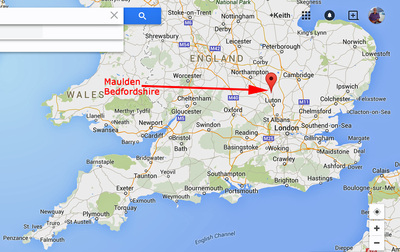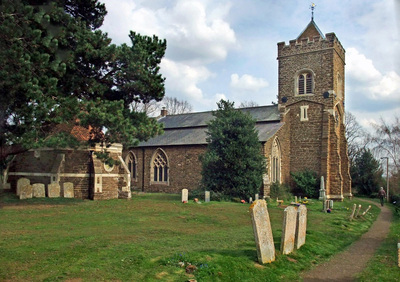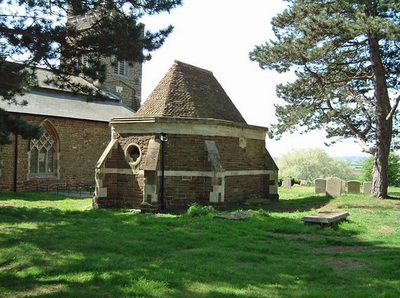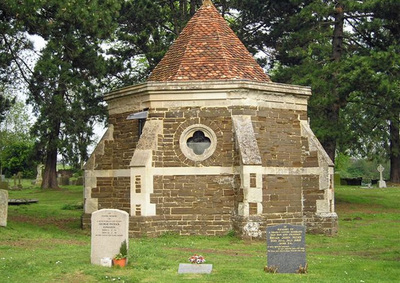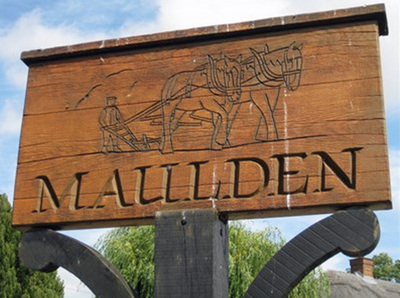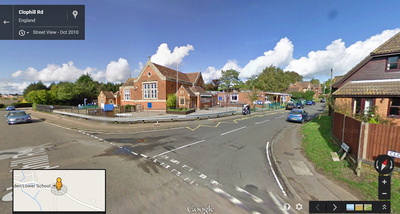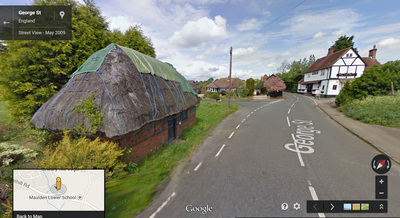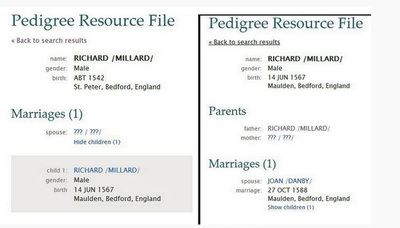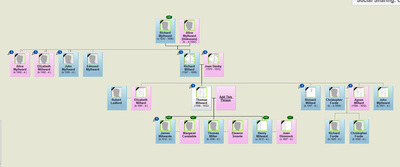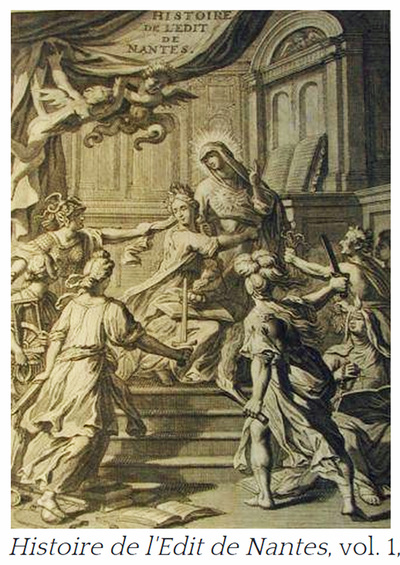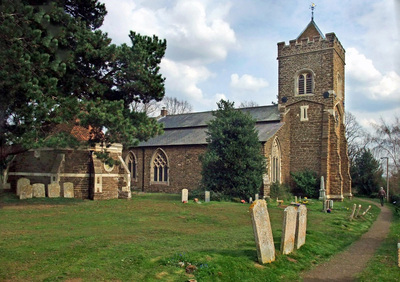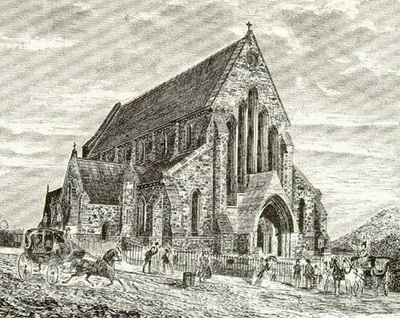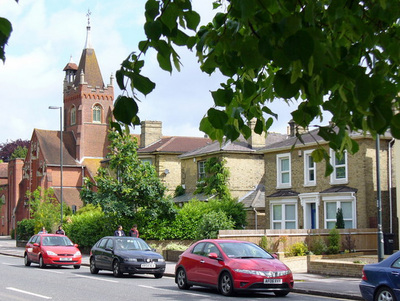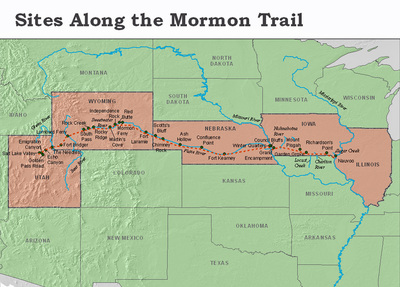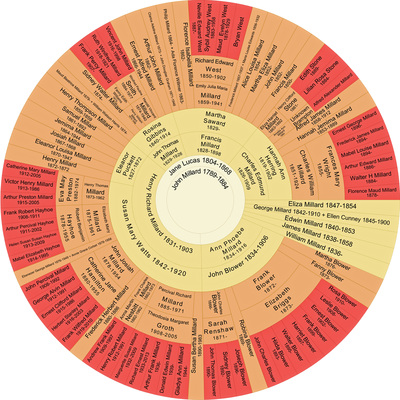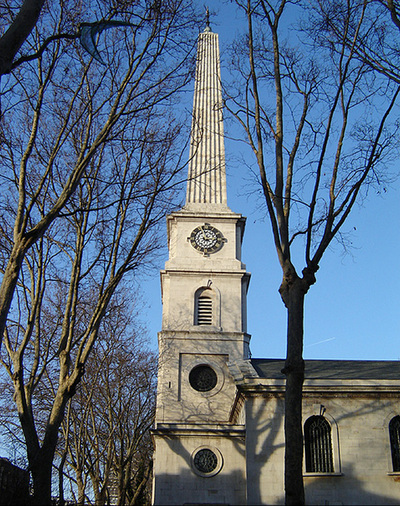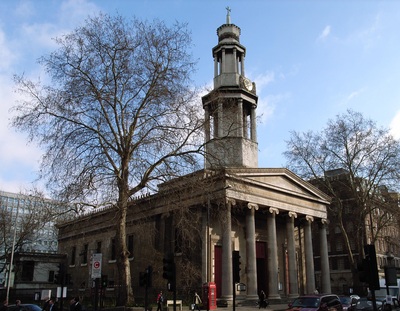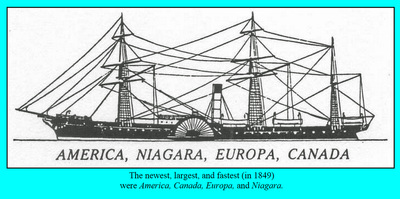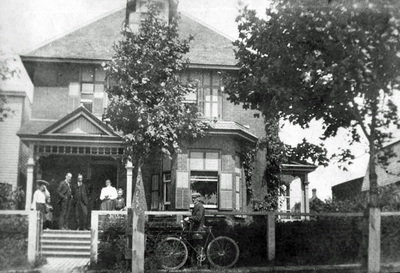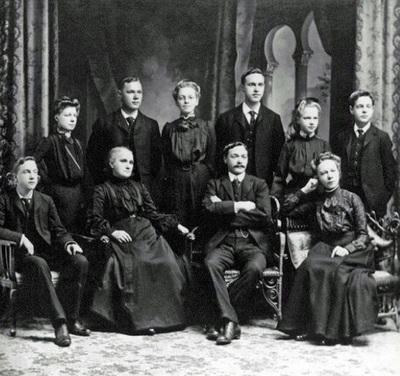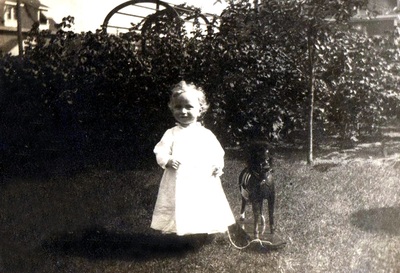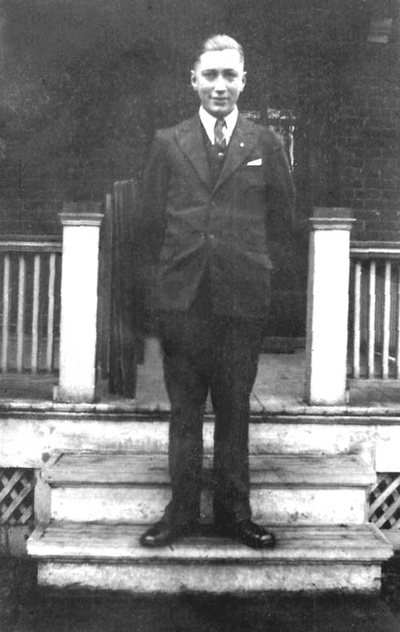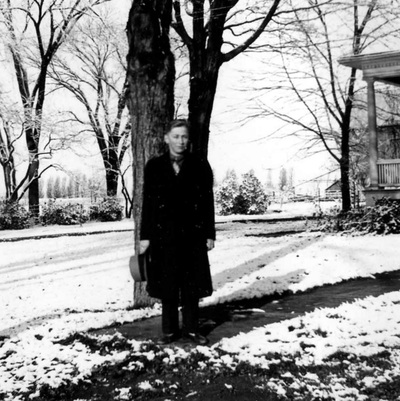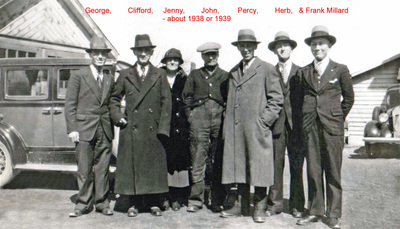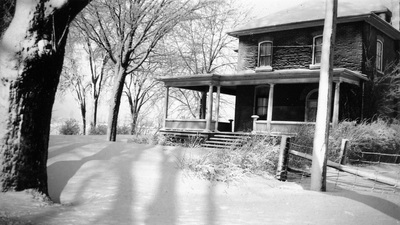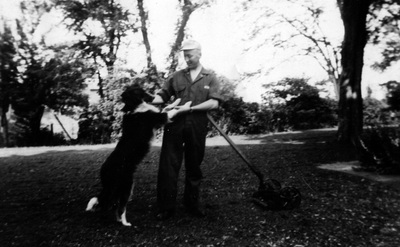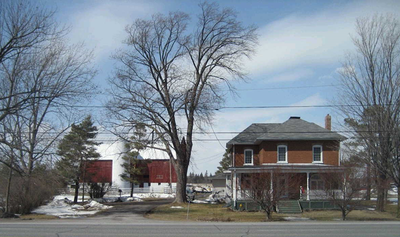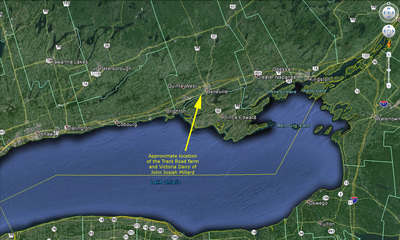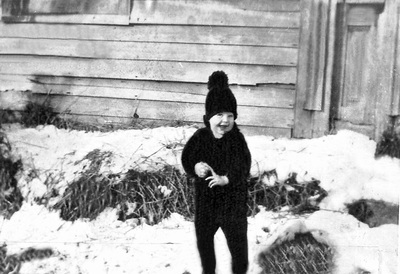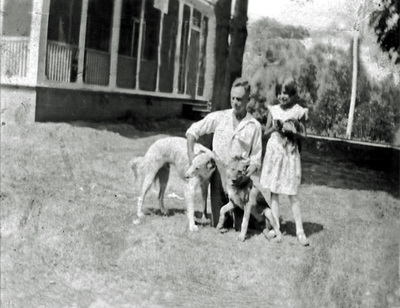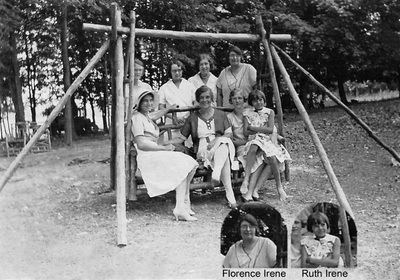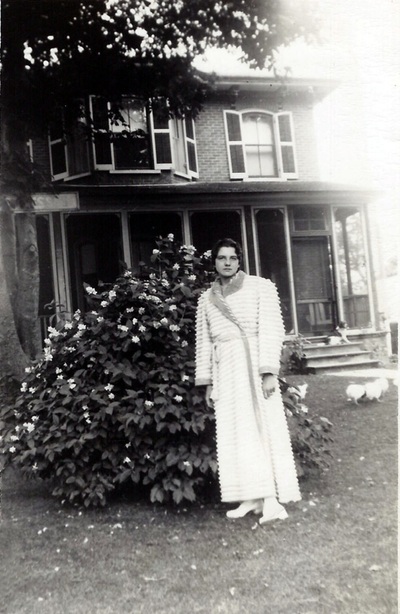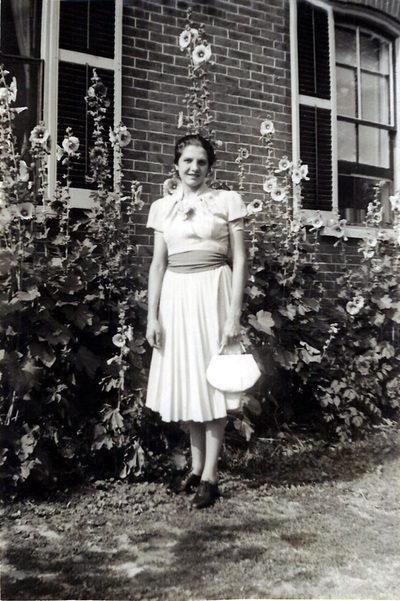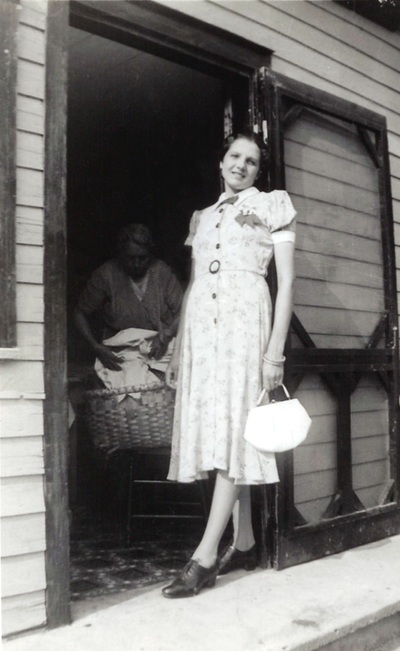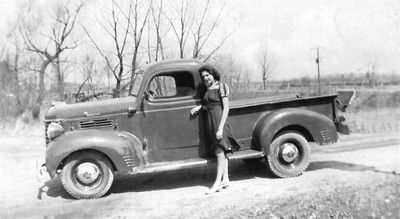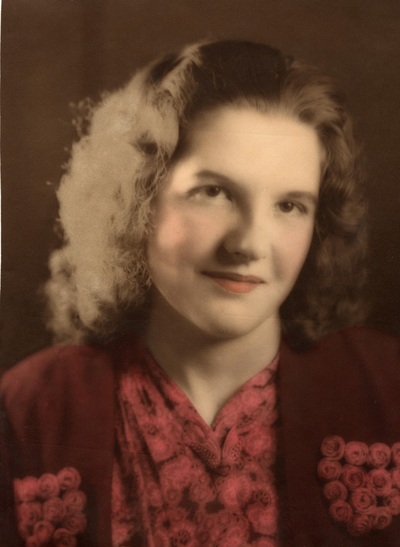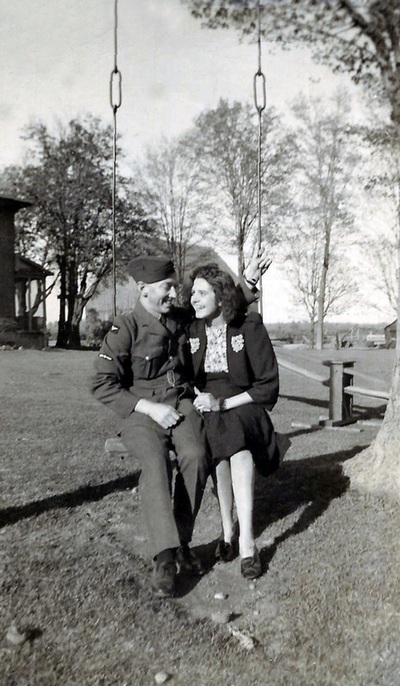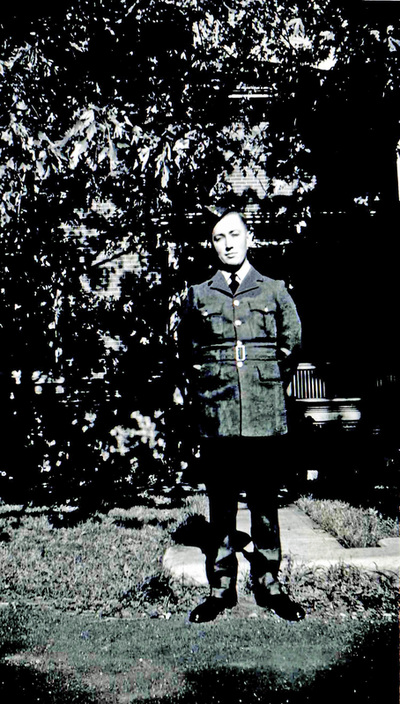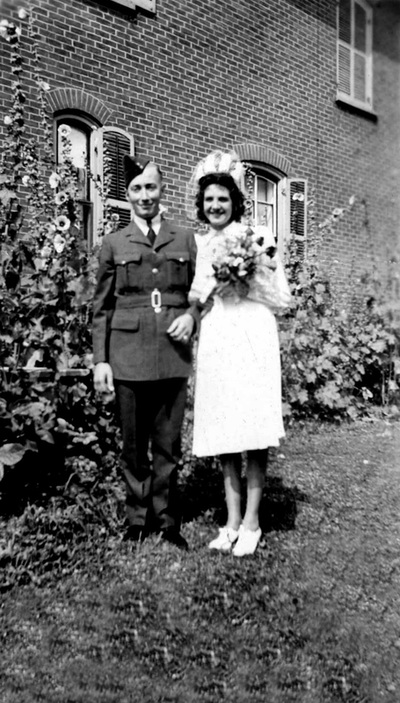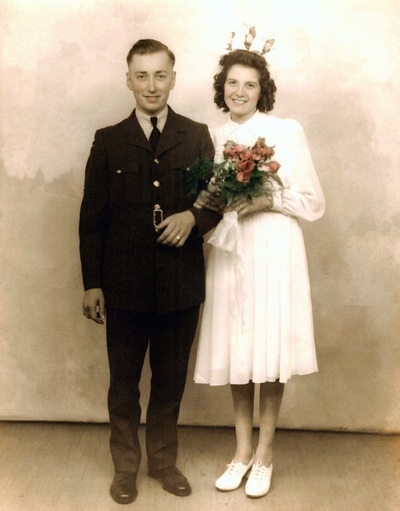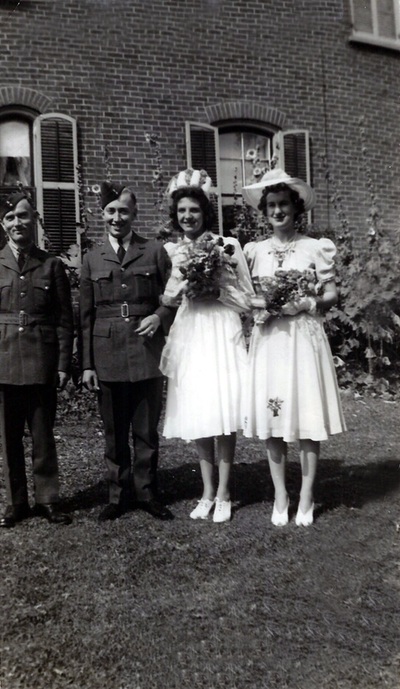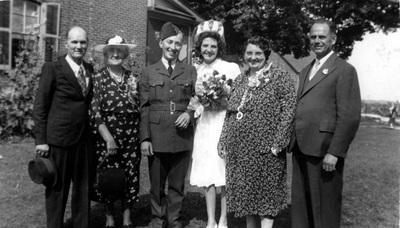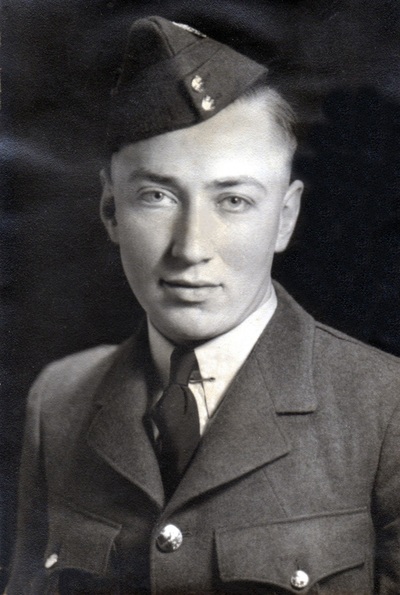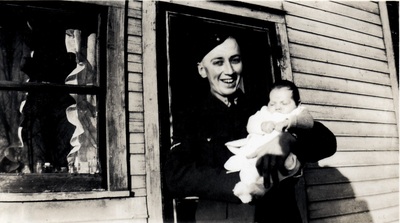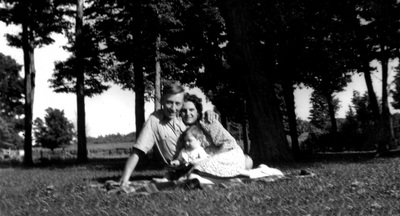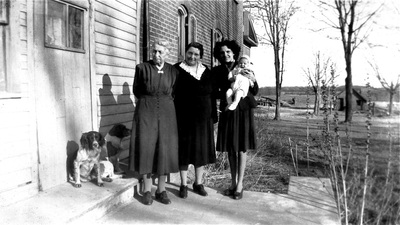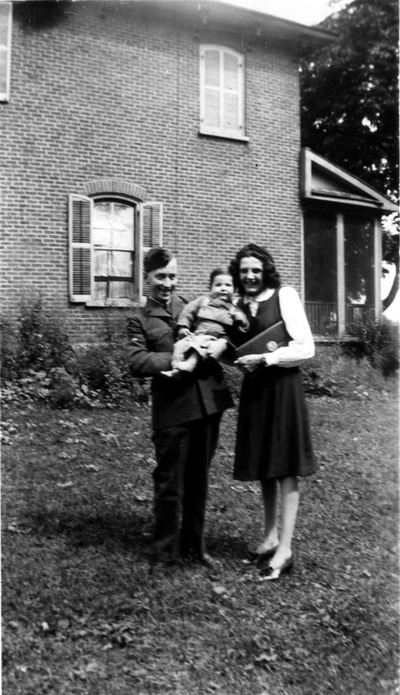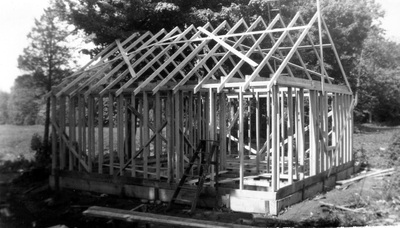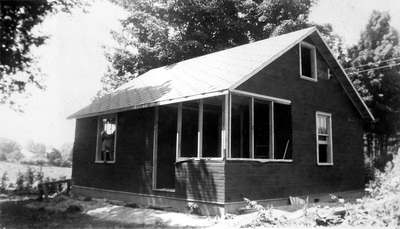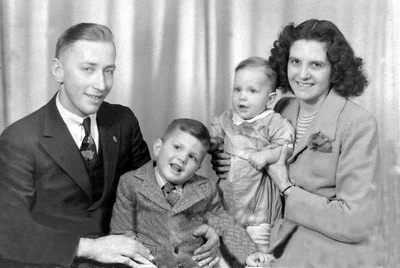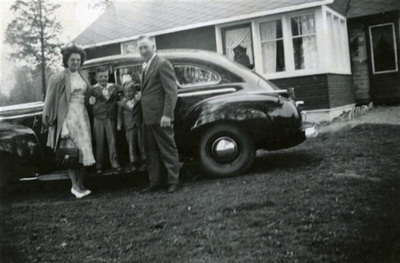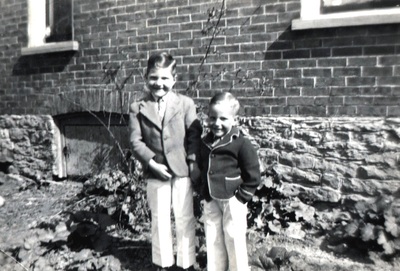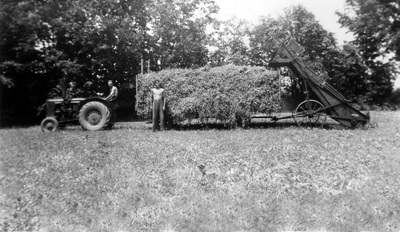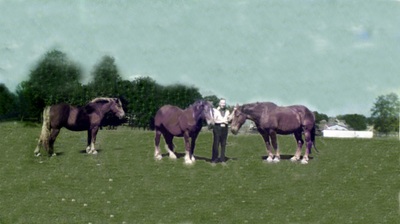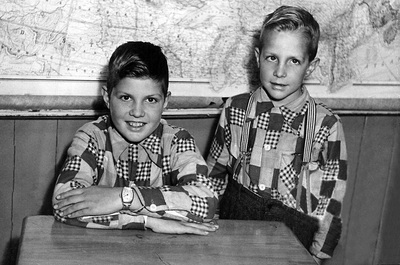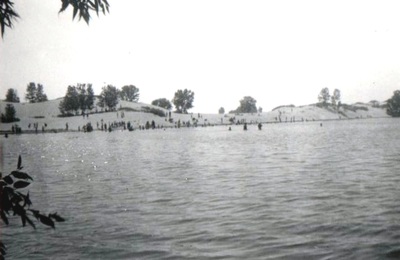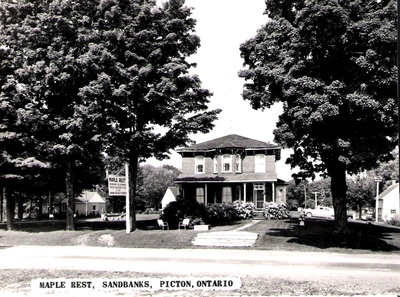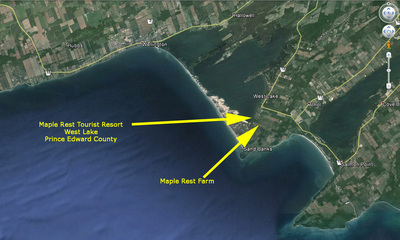Author: Keith Millard
Millard Origins:
As we have seen in other family essays, surnames were not necessary in the small villages of medieval England, but taxation initiatives in the 1300s required all English citizens to have a family name. And as autocratic as it sounds, in many cases all the residents of a village regardless of their biological origins were given the same surname (e.g. Highstead or Greatrakes), or in many cases a person was given a surname based on their occupation (i.e. Robert the baker became Robert Baker and Thomas the miller [mill warder] became Thomas Millward). These names later were anglicized into simpler spellings (e.g. Istead, Greatrix, Miller or Millard).
There were, in fact, other origins for some Millards. It is a certainty that Millard was a family name in France before 1600, and our family tradition has always been that our Millards were descended from French Huguenot refugees immigrating to England in the early 1500s and through the 1600s. Several areas in Bedfordshire were settlement locations for Huguenots from the Pas de Calais coastal area of France, and they were known for their weaving and lacemaking. Unfortunately, in France all the Huguenot churches were totally destroyed and all records burned, so documented proof is not available.
Our furthest documented origin point is the village of Maulden in Bedfordshire in the mid to late 1500s, at the beginning of parish records being kept. Maulden is about 8 miles south of the town of Bedford, and was referred to in the Domesday Book as Meldone (believed to mean “the cross on the hill” or “the meeting place”). The St Mary the Virgin original church was built in the 1200s, but it is believed early Christian priests were active in the area as far back as the 600s AD. A 17th-century mausoleum and crypt known as the Ailesbury Mausoleum was built by Thomas, Earl of Elgin for his wife, Diana, in the 1600s. And even into the 1800s, the women of Maulden were known for their straw plaiting and lacemaking. We do not believe the small stream flowing through Maulden was sufficient for a mill operation.
So, Richard Myllward, born about 1542, was married in Maulden and his son was baptized as Richard Millard. The family expanded and moved over the next 300 years, until we get down to Henry Richard Millard, born 1831 in London, England. If you look at the family tree chart below, you can see how the family name changed frequently, even within the same household, depending on how the local parish priest decided to enter it in the parish register at the time. It was not uncommon for a person's name to be spelled one way when they were baptised, another when they married, and still another when they died.
Click on photos to enlarge, cursor over for caption:
Millard Origins:
As we have seen in other family essays, surnames were not necessary in the small villages of medieval England, but taxation initiatives in the 1300s required all English citizens to have a family name. And as autocratic as it sounds, in many cases all the residents of a village regardless of their biological origins were given the same surname (e.g. Highstead or Greatrakes), or in many cases a person was given a surname based on their occupation (i.e. Robert the baker became Robert Baker and Thomas the miller [mill warder] became Thomas Millward). These names later were anglicized into simpler spellings (e.g. Istead, Greatrix, Miller or Millard).
There were, in fact, other origins for some Millards. It is a certainty that Millard was a family name in France before 1600, and our family tradition has always been that our Millards were descended from French Huguenot refugees immigrating to England in the early 1500s and through the 1600s. Several areas in Bedfordshire were settlement locations for Huguenots from the Pas de Calais coastal area of France, and they were known for their weaving and lacemaking. Unfortunately, in France all the Huguenot churches were totally destroyed and all records burned, so documented proof is not available.
Our furthest documented origin point is the village of Maulden in Bedfordshire in the mid to late 1500s, at the beginning of parish records being kept. Maulden is about 8 miles south of the town of Bedford, and was referred to in the Domesday Book as Meldone (believed to mean “the cross on the hill” or “the meeting place”). The St Mary the Virgin original church was built in the 1200s, but it is believed early Christian priests were active in the area as far back as the 600s AD. A 17th-century mausoleum and crypt known as the Ailesbury Mausoleum was built by Thomas, Earl of Elgin for his wife, Diana, in the 1600s. And even into the 1800s, the women of Maulden were known for their straw plaiting and lacemaking. We do not believe the small stream flowing through Maulden was sufficient for a mill operation.
So, Richard Myllward, born about 1542, was married in Maulden and his son was baptized as Richard Millard. The family expanded and moved over the next 300 years, until we get down to Henry Richard Millard, born 1831 in London, England. If you look at the family tree chart below, you can see how the family name changed frequently, even within the same household, depending on how the local parish priest decided to enter it in the parish register at the time. It was not uncommon for a person's name to be spelled one way when they were baptised, another when they married, and still another when they died.
Click on photos to enlarge, cursor over for caption:
Millard Family – Religious Beliefs:
This chapter is included because of the (believed) historic origins of this particular Millard family, as well as the many deeply held religious beliefs in the following generations down to the present day. None of the following is intended as criticism or endorsement in any way, but simply a statement of fact.
Huguenots were French Protestants and followers of the teachings of John Calvin in the early 1500s. Above all, Huguenots saw Christian faith as simple faith in God and relying upon God for salvation, but were more widely known for their harsh criticism of the doctrines and worship of saints in the Catholic church. This led to religious persecution by both the Crown and the Church with more than 75% of Huguenots recanting their faith, but more than 500,000 became refugees as they immigrated to other more tolerant countries. Our family culture is that our Millard family in England was started by one or more of these refugees. An alternate theory supports a view that one of these Huguenot girls married one of our ancestor Millard men and influenced the religious views of their descendants.
Church of England was the state religion in England and also the official registration agency for all births, marriages, and deaths. It is believed that members of non-conformist and other religious groups were still required to register all family events with the Church of England.
Non-Conformist Millards were quite active in the 1800s, and the children and widow of John Millard (b. 1759 in Leighton Buzzard, Bedfordshire) moved to Southampton where they joined the Above Bar Congregational Church in Southampton (which had been founded in 1662 with Rev. Nathaniel Robinson as its first Minister. The hymn writer Isaac Watts (1674 – 1748) was a deacon of the church at one stage). Their descendants have been missionaries and evangelists to a number of countries including Ceylon, Armenia, South Africa, and others.
Mormon Millard family members included Charles Millard and his wife Hannah Claridge and children traveling from England and joining the 1846 Mormon Exodus from Missouri to Utah.
Plymouth Brethren Millards included Henry Richard Millard and all of his children, though it is possible Henry did not become an adherent until after he immigrated to Montreal, Canada in the 1850s. Plymouth Brethren were the founders of the movement believing every word in the Bible is literally true.
This in turn has led to the Creationist movement (which is, that the earth and everything on it were created in 7 earth days about 6,000 years ago) today in a number of countries, and particularly in the United States where statistics say as many as 60% of the population in some states believe this to be correct.
Today, there are still numerous younger Millards holding these minority beliefs, home schooling their children so they won't be exposed to other teachings, and planning that their children will mature holding these same beliefs.
Mainstream Christian denominations have adherents amongst many of our Millard cousins today, including many evangelical denominations.
Millenial Millards exist in large numbers as well, who do not have a belief in any organized religion but many of whom are spiritual in their approach to treating others and their coexistence with nature.
Click on photos to enlarge, cursor over for caption:
This chapter is included because of the (believed) historic origins of this particular Millard family, as well as the many deeply held religious beliefs in the following generations down to the present day. None of the following is intended as criticism or endorsement in any way, but simply a statement of fact.
Huguenots were French Protestants and followers of the teachings of John Calvin in the early 1500s. Above all, Huguenots saw Christian faith as simple faith in God and relying upon God for salvation, but were more widely known for their harsh criticism of the doctrines and worship of saints in the Catholic church. This led to religious persecution by both the Crown and the Church with more than 75% of Huguenots recanting their faith, but more than 500,000 became refugees as they immigrated to other more tolerant countries. Our family culture is that our Millard family in England was started by one or more of these refugees. An alternate theory supports a view that one of these Huguenot girls married one of our ancestor Millard men and influenced the religious views of their descendants.
Church of England was the state religion in England and also the official registration agency for all births, marriages, and deaths. It is believed that members of non-conformist and other religious groups were still required to register all family events with the Church of England.
Non-Conformist Millards were quite active in the 1800s, and the children and widow of John Millard (b. 1759 in Leighton Buzzard, Bedfordshire) moved to Southampton where they joined the Above Bar Congregational Church in Southampton (which had been founded in 1662 with Rev. Nathaniel Robinson as its first Minister. The hymn writer Isaac Watts (1674 – 1748) was a deacon of the church at one stage). Their descendants have been missionaries and evangelists to a number of countries including Ceylon, Armenia, South Africa, and others.
Mormon Millard family members included Charles Millard and his wife Hannah Claridge and children traveling from England and joining the 1846 Mormon Exodus from Missouri to Utah.
Plymouth Brethren Millards included Henry Richard Millard and all of his children, though it is possible Henry did not become an adherent until after he immigrated to Montreal, Canada in the 1850s. Plymouth Brethren were the founders of the movement believing every word in the Bible is literally true.
This in turn has led to the Creationist movement (which is, that the earth and everything on it were created in 7 earth days about 6,000 years ago) today in a number of countries, and particularly in the United States where statistics say as many as 60% of the population in some states believe this to be correct.
Today, there are still numerous younger Millards holding these minority beliefs, home schooling their children so they won't be exposed to other teachings, and planning that their children will mature holding these same beliefs.
Mainstream Christian denominations have adherents amongst many of our Millard cousins today, including many evangelical denominations.
Millenial Millards exist in large numbers as well, who do not have a belief in any organized religion but many of whom are spiritual in their approach to treating others and their coexistence with nature.
Click on photos to enlarge, cursor over for caption:
Henry Richard Millard
John Millard and Jane Lucas were the parents of Henry Richard Millard and his nine siblings. John was born in 1789 in Great Brickhill, Buckinghamshire, and was an Excise Tax officer before becoming a successful grocer in Islington, Middlesex (a district in North London). He has 230 descendants in our Geni Family Tree.
Henry Richard Millard was born in October 1831, the 4th of 10 children, and baptized in January 1832 at St Luke's, Finsbury, in Middlesex. He married Eleanor Puckett at the St Pancras New Parish Church in London in April 1858 and in May they sailed on the Niagara Mail Ship to Halifax, Nova Scotia, then travelled on to Montreal. Henry Richard was a well to do merchant and watchmaker in Montreal.
Seven children were born to Henry and Eleanor in Montreal, and she died following the birth of Henry in 1872. A year later, Henry married Susan Mary Watts in Montreal, and they had eight children between 1873 and 1890, with John Josiah, born in 1878 being the 4th of these. Henry Richard died in 1903.
Click on photos to enlarge, cursor over for caption:
John Millard and Jane Lucas were the parents of Henry Richard Millard and his nine siblings. John was born in 1789 in Great Brickhill, Buckinghamshire, and was an Excise Tax officer before becoming a successful grocer in Islington, Middlesex (a district in North London). He has 230 descendants in our Geni Family Tree.
Henry Richard Millard was born in October 1831, the 4th of 10 children, and baptized in January 1832 at St Luke's, Finsbury, in Middlesex. He married Eleanor Puckett at the St Pancras New Parish Church in London in April 1858 and in May they sailed on the Niagara Mail Ship to Halifax, Nova Scotia, then travelled on to Montreal. Henry Richard was a well to do merchant and watchmaker in Montreal.
Seven children were born to Henry and Eleanor in Montreal, and she died following the birth of Henry in 1872. A year later, Henry married Susan Mary Watts in Montreal, and they had eight children between 1873 and 1890, with John Josiah, born in 1878 being the 4th of these. Henry Richard died in 1903.
Click on photos to enlarge, cursor over for caption:
John Josiah Millard:
John or Johnny Millard was born in 1878 at 472 St Lawrence Street in Montreal, Quebec. Though born in the city he loved the outdoors, and in 1898 undertook a solo canoe and camping trip up the Ottawa River to Ottawa. On one of his diary pages he mentions his employer Mr James Jephcott of the Montreal Lithographing Company.
In the 1901 Census, Johnny is living with an English family in Caldwell Township, Nipissing, Ontario. In the 1911 Census the John Josiah Millard family is still living in Caldwell Township, Nipissing, Ontario, and John's brother Percival is living with them. In the 1921 Census the family is still living in Caldwell Township, Nipissing, Ontario with their 5 children, John Percival (Percy), George Alvin, Ernest Clifford (Cliff), Herbert Stanley (Herb), and Frank Wilfred.
In August of 1922 the family relocated to a farm near the Bay of Quinte in Prince Edward County, but after 3 months they moved across the Bay to a farm on Trent Road, Sidney Township, Hastings County, but also located on the Bay of Quinte. John Josiah operated the dairy farm and founded the Victoria Dairy which functioned until the early 1940s. My father's memories are that John Josiah's strict religious Plymouth Brethren and personal beliefs led to his wife and children essentially being treated as bonded servants, though they had some happy times as well, and as they matured none of the five boys had any interest in staying on the farm or in the dairy.
John Josiah found himself more or less deserted by his sons, and after the dairy burned (perhaps not by accident), he left the farm deserting his wife in the process, and travelled to Penticton, BC where he lived with his brother Percival for some period of years, only later returning to Belleville. He died in 1954 after 18 months of illness at the age of 76.
The youngest son, Frank Wilfred, was born on May 14, 1919 (at the home in Caldwell Township in Nipissing County). He was an intelligent and gentle soul, but when his grade school teachers petitioned for him to go on to high school and one of his aunts in Montreal promised to pay his way all the way through University, John demurred with the statement that "too much learning makes a boy lazy" and Frank was forced to leave school and work on the farm and dairy. Frank was desperately disappointed but never complained, and we believe he is the only one of the five boys who completed (or were allowed to complete) primary school.
Click on photos to enlarge, cursor over for caption:
John or Johnny Millard was born in 1878 at 472 St Lawrence Street in Montreal, Quebec. Though born in the city he loved the outdoors, and in 1898 undertook a solo canoe and camping trip up the Ottawa River to Ottawa. On one of his diary pages he mentions his employer Mr James Jephcott of the Montreal Lithographing Company.
In the 1901 Census, Johnny is living with an English family in Caldwell Township, Nipissing, Ontario. In the 1911 Census the John Josiah Millard family is still living in Caldwell Township, Nipissing, Ontario, and John's brother Percival is living with them. In the 1921 Census the family is still living in Caldwell Township, Nipissing, Ontario with their 5 children, John Percival (Percy), George Alvin, Ernest Clifford (Cliff), Herbert Stanley (Herb), and Frank Wilfred.
In August of 1922 the family relocated to a farm near the Bay of Quinte in Prince Edward County, but after 3 months they moved across the Bay to a farm on Trent Road, Sidney Township, Hastings County, but also located on the Bay of Quinte. John Josiah operated the dairy farm and founded the Victoria Dairy which functioned until the early 1940s. My father's memories are that John Josiah's strict religious Plymouth Brethren and personal beliefs led to his wife and children essentially being treated as bonded servants, though they had some happy times as well, and as they matured none of the five boys had any interest in staying on the farm or in the dairy.
John Josiah found himself more or less deserted by his sons, and after the dairy burned (perhaps not by accident), he left the farm deserting his wife in the process, and travelled to Penticton, BC where he lived with his brother Percival for some period of years, only later returning to Belleville. He died in 1954 after 18 months of illness at the age of 76.
The youngest son, Frank Wilfred, was born on May 14, 1919 (at the home in Caldwell Township in Nipissing County). He was an intelligent and gentle soul, but when his grade school teachers petitioned for him to go on to high school and one of his aunts in Montreal promised to pay his way all the way through University, John demurred with the statement that "too much learning makes a boy lazy" and Frank was forced to leave school and work on the farm and dairy. Frank was desperately disappointed but never complained, and we believe he is the only one of the five boys who completed (or were allowed to complete) primary school.
Click on photos to enlarge, cursor over for caption:
The Millard/Kleinsteuber Connection:
So, World War II came to pass, and Frank joined the Royal Canadian Air Force, but as a conscientious objector due to his religious beliefs. As a result, he was somewhat bullied and demeaned and forced to function as a waiter in the Officers Mess where after a period of time, whether accidental or bumped, spilling coffee in an officer's lap led to him being reassigned to a maintenance division as a carpenter.
This opportunity to learn carpentry was interesting and Frank found it an activity he really enjoyed, working with his hands and building things. He was mainly stationed at Trenton and Mountain View air bases near Belleville, and a friend got Frank to accompany him to Christian and Missionary Alliance services in Belleville when they were able to have leave.
At the same time, Ruth Irene Kleinsteuber, the only child of Mitchel Kleinsteuber and Florence Foshay Kleinsteuber, was studying at the Secretarial School in Belleville, and became close friends with another girl there, and they started attending the Christian and Missionary Alliance church together.
Note: Mitchel Kleinsteuber was the grandson of a German immigrant, and was born in a log cabin in the backwoods of Ontario. The story of his grandfather and uncles and aunts coming to Canada is at Pictorial Journey
Before long, Frank and Ruth became close friends, and in August of 1942 they married. Because so many young men from farms were in the military there was a desperate need for help in growing food and getting it to market (and to the military). John Josiah offered the farm and dairy to Frank if he would take it over, but at the same time Mitchel Kleinsteuber offered the opportunity to take over the farming operation at Maple Rest on shares, and the military agreed to an early release in 1944 for this to take place.
Frank and Ruth had two children, both boys, Mitchel Ross (Ross) born in 1943 and Keith Wilfred born in 1946. After almost all of the canning factories in Prince Edward County were bought out and closed in 1955 or 1956, Frank, along with many other area farmers, was forced to declare bankruptcy. He returned to his love of woodworking as a carpenter and in 1958 found a permanent position as a carpenter in Oshawa with the Oshawa Board of Education.
There is a lot more to the Frank Millard and Ruth Kleinsteuber Millard story, but this is where this story shall end. Frank and Ruth were my parents, and I will never regret the wonderful experience of growing up at Maple Rest on West Lake nor all the hard work that was involved. I was truly heartbroken at leaving Maple Rest and spent several summers working for my grandparents at Maple Rest until I completed high school and started working in Data Processing at General Motors of Canada.
Click on photos to enlarge, cursor over for caption:
So, World War II came to pass, and Frank joined the Royal Canadian Air Force, but as a conscientious objector due to his religious beliefs. As a result, he was somewhat bullied and demeaned and forced to function as a waiter in the Officers Mess where after a period of time, whether accidental or bumped, spilling coffee in an officer's lap led to him being reassigned to a maintenance division as a carpenter.
This opportunity to learn carpentry was interesting and Frank found it an activity he really enjoyed, working with his hands and building things. He was mainly stationed at Trenton and Mountain View air bases near Belleville, and a friend got Frank to accompany him to Christian and Missionary Alliance services in Belleville when they were able to have leave.
At the same time, Ruth Irene Kleinsteuber, the only child of Mitchel Kleinsteuber and Florence Foshay Kleinsteuber, was studying at the Secretarial School in Belleville, and became close friends with another girl there, and they started attending the Christian and Missionary Alliance church together.
Note: Mitchel Kleinsteuber was the grandson of a German immigrant, and was born in a log cabin in the backwoods of Ontario. The story of his grandfather and uncles and aunts coming to Canada is at Pictorial Journey
Before long, Frank and Ruth became close friends, and in August of 1942 they married. Because so many young men from farms were in the military there was a desperate need for help in growing food and getting it to market (and to the military). John Josiah offered the farm and dairy to Frank if he would take it over, but at the same time Mitchel Kleinsteuber offered the opportunity to take over the farming operation at Maple Rest on shares, and the military agreed to an early release in 1944 for this to take place.
Frank and Ruth had two children, both boys, Mitchel Ross (Ross) born in 1943 and Keith Wilfred born in 1946. After almost all of the canning factories in Prince Edward County were bought out and closed in 1955 or 1956, Frank, along with many other area farmers, was forced to declare bankruptcy. He returned to his love of woodworking as a carpenter and in 1958 found a permanent position as a carpenter in Oshawa with the Oshawa Board of Education.
There is a lot more to the Frank Millard and Ruth Kleinsteuber Millard story, but this is where this story shall end. Frank and Ruth were my parents, and I will never regret the wonderful experience of growing up at Maple Rest on West Lake nor all the hard work that was involved. I was truly heartbroken at leaving Maple Rest and spent several summers working for my grandparents at Maple Rest until I completed high school and started working in Data Processing at General Motors of Canada.
Click on photos to enlarge, cursor over for caption:
